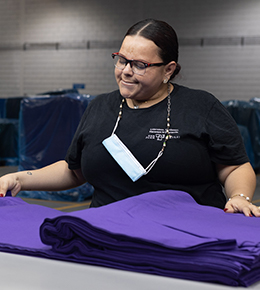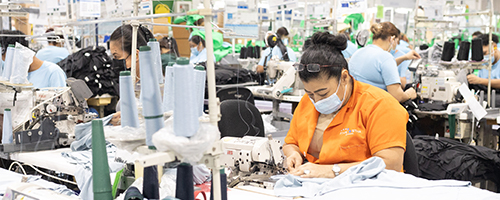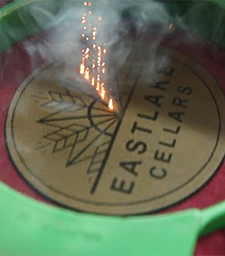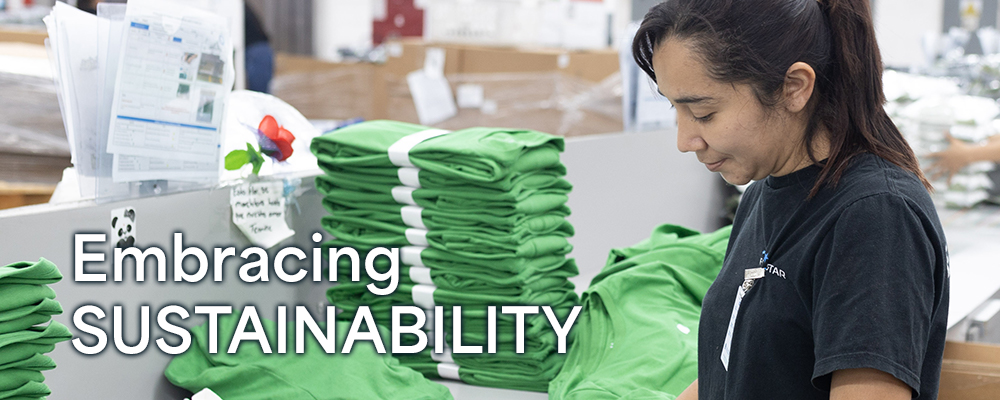The fashion industry has long been associated with environmental issues, from excessive water usage and chemical pollution to textile waste. As consumer awareness about sustainability grows, there is a pressing need for the industry to adopt more eco-friendly practices.
Sustainable garment decoration has been gaining momentum in recent years, as brands and consumers alike seek greener alternatives to traditional decoration methods. Let me take you on a journey to explore the concept of sustainable garment decoration, it’s importance in the broader context of sustainable fashion, and some of the most innovative and eco-conscious techniques being used in the industry today.

Understanding Sustainable Garment Decoration
Sustainable garment decoration refers to the embellishment of clothing and textiles using methods that have minimal negative impacts on the environment and prioritize social responsibility. Traditional decoration methods often involve the use of harmful chemicals, excessive water consumption, and energy-intensive processes. In contrast, sustainable decoration techniques aim to reduce waste, conserve resources, and promote ethical practices throughout the supply chain.
Importance in Sustainable Fashion
The significance of sustainable garment decoration cannot be overstated in the context of the broader sustainable fashion movement. Clothing decoration is an integral part of the fashion industry, and by adopting more eco-friendly methods, brands can significantly contribute to reducing the sector’s environmental footprint. Here are some key reasons why sustainable garment decoration matters.
- Chemical Management: Most garment decoration methods rely on the use of some kind of chemicals in inks, dyes or fabric treatments. Sustainable methods prioritize the use of options like water-based inks, natural dyes and non-hazardous materials, which can lower their environmental impact. You can also check to see if chemical products have been certified as non-hazardous, and should always manage your chemical use to ensure they are used and disposed of as directed.
- Conserving Water Resources: The fashion industry is notorious for its substantial use of water consumption, particularly in the dyeing process. Here at SanMar, our water usage is limited to domestic use in our office and distribution centers as well as cooling at our Arizona distribution center and is sourced from public-supply systems. We’ve aimed to reduce our usage by installing water-efficient fixtures, monitoring devices for early leak detection and water efficient landscaping.
- Minimizing Waste Generation: Sustainable manufacturing techniques focus on precision and efficiency, resulting in minimal material waste. This not only reduces the amount of fabric and resources sent to landfills but also decreases the overall carbon footprint of the industry. Our partner in Honduras is implementing processes to recycle scrap materials into new textiles. This means that a growing number of styles SanMar is developing will be made from recycled and sustainable fabrics, such as the Recycled Blend Tee from Allmade.
- Promoting Ethical Labor Practices: Sustainability in garment decoration and manufacturing goes beyond environmental considerations. It also involves ensuring fair labor practices, including living wages, safe working conditions and support for local communities and artisanal craftsmanship. All our overseas factories are monitored by a team of people to ensure that our manufacturing processes meet these standards, and we also invest heavily into the communities we impact by investing in education and healthcare. Just this year SanMar was also reaccredited by the Fair Labor Association, and continues to be one of the only companies in a small group to hold this accreditation.

Innovative Sustainable Garment Decoration Techniques
- Digital Printing: Digital printing of garments has emerged as a game-changer in the world of sustainable decoration. Techniques such as Direct to Garment printing utilize water-based inks making them great for biodegradable decomposition and works best with natural fibers, instead of synthetic, more environmentally harmful fabrics. Digital printing offers several advantages such as minimal water consumption, reduced ink wastage, and the ability to produce short runs, reducing excess inventory and waste.
- Laser Etching and Engraving: Laser technology allows for precise and intricate designs to be etched onto the surface of a fabric without the use of chemicals. This process produces less waste, uses less energy, and enables the upcycling of old materials by repurposing garments with new designs.
- Embroidery: Embroidery has been a tried-and-true method of decoration for thousands of years. It has been industrialized and synthetic threads can stay in a landfill for hundreds of years. Threads that use natural materials, such as cotton, are much more easily broken down by microorganisms in the environment.
- Dye Sublimation: Dye Sublimation is a technique that uses heat activated dyes that turn into a gaseous state and bond to the fibers of the garment. This technique uses minimal waste, as none of the dye can get into the water system unlike other decoration methods, and the same print can be used multiple times on different garments resulting in less waste of dye and transfer paper. While the decoration method itself is eco-friendly, it works best on synthetic fibers such as polyester, that can have a harmful impact on the environment if not manufactured in a sustainable way.


As the world embraces sustainability as a guiding principle, the garment decoration industry has a unique opportunity to lead by example. By prioritizing innovation, ethical practices and sourcing, and conscious consumer choices, we can pave the way for an industry that harmoniously balances creativity, style, and environmental responsibility. Through collective efforts we can help shape a more sustainable future where fashion is not only an expression of individuality but also a statement of environmental consciousness.
I encourage you to head to CanvasforGood.com to read SanMar’s latest Sustainability Report, where you can find out all we are doing to meet these goals and lead by example!
